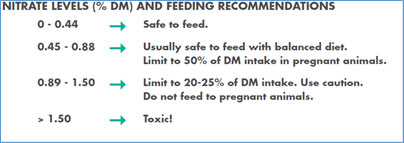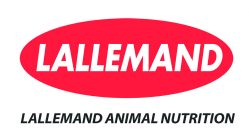This item has been supplied by a forage marketer and has not been edited, verified or endorsed by Hay & Forage Grower.
It is estimated that about 3 percent of the U.S. corn crop experienced drought conditions this year.1 If plants were stressed in the field, there will likely be challenges ensiling and feeding it too.
“First off, nitrates can accumulate when corn is under drought stress, and high levels of nitrates can be harmful to animal health,” says Renato Schmidt, Ph.D., Technical Services – Forage, Lallemand Animal Nutrition. “We can still produce good silage from drought-stressed corn as long as the crop is harvested correctly, ensiled well and carefully stored.”Don’t take high nitrate corn lightly, Dr. Schmidt warns. Even subclinical nitrate toxicity can result in: decreased intakes, weight gains and production; decreased conception rates, embryonic death, and, occasionally, abortions.2
Nitrates accumulate in the bottom third of the plant. Therefore, producers should cut drought-stressed corn silage crops higher on the stalk.3 Assess the degree of drought stress in the field. Then, harvest based on half to two-thirds milk line and whole plant dry matter (DM) of 32 to 38 percent if ear and kernel development appear normal — at least 80 percent of normal bushel yields. If yield is severely reduced, then harvest based solely on whole plant DM target value.
Next, drought-stressed corn tends to have low levels of lactic acid bacteria (LAB), which are essential to drive the initial fermentation process. These crops also tend to have higher levels of yeasts and molds and so tend to have more aerobically stability issues. A proven combination inoculant can help address both challenges. For example, the Biotal® Buchneri 500 forage inoculant adds the LAB Pediococcus pentosaceus 12455 and Lactobacillus buchneri 40788 to help achieve a fast front-end fermentation and maintain aerobic stability throughout storage and feedout. In fact, L. buchneri 40788 applied at 400,000 CFU per gram of silage or 600,000 CFU per gram of high-moisture corn (HMC), has been uniquely reviewed by the FDA and allowed to claim improved aerobic stability.
The ensiling process itself can reduce nitrates by 50 to 70 percent. However, it’s important to give ensiling time to work.
“Never feed freshly chopped forage coming from a drought-stressed field,” he says. “It’s important to let forage ensile for at least three to four weeks. Then, introduce it gradually into the ration.”

“Most importantly when harvesting drought-stressed forage is considering your own safety. Be cautious when unloading silage made from corn with high nitrate levels,” Dr. Schmidt warns. “Nitrogen oxide gasses produced early during ensiling are lethal to both animals and humans.”
Dr. Schmidt notes these gasses are typically only a concern during the first few days of ensiling and tend to accumulate in low areas as they are heavier than air. The gas can be colorless or look reddish-brown. To dissipate the gasses, run the blower for 15 to 20 minutes before entering an upright silo and use caution around vents in silo bags. Workers should wear a respirator, especially when entering an upright silo to guard against these gases and also prevent asphyxiation due the carbon dioxide, the most common silage gas.

Lallemand Animal Nutrition is committed to optimizing animal performance and well-being with specific natural microbial product and service solutions. Using sound science, proven results and knowledge, Lallemand Animal Nutrition develops, produces and markets high value yeast and bacteria products ─ including probiotics, silage inoculants and yeast derivatives. Lallemand offers a higher level of expertise, leadership and industry commitment with long-term and profitable solutions to move our partners Forward. Lallemand Animal Nutrition is Specific for your success. For more information, please visit www.lallemandanimalnutrition.com.

